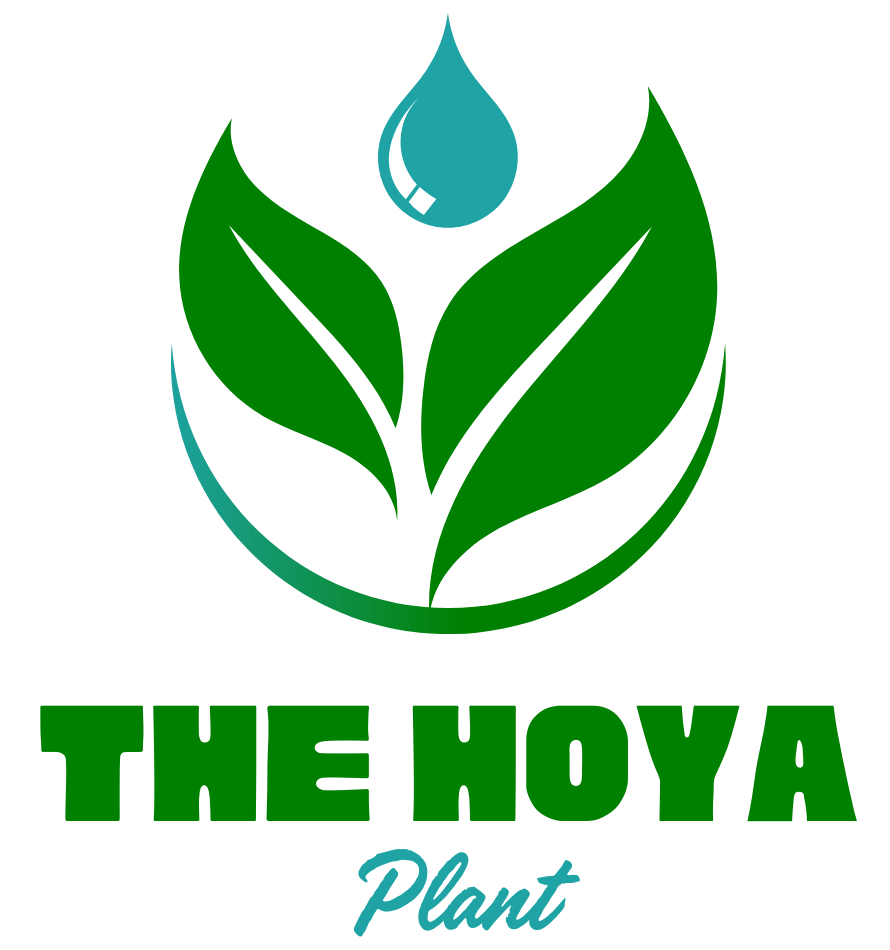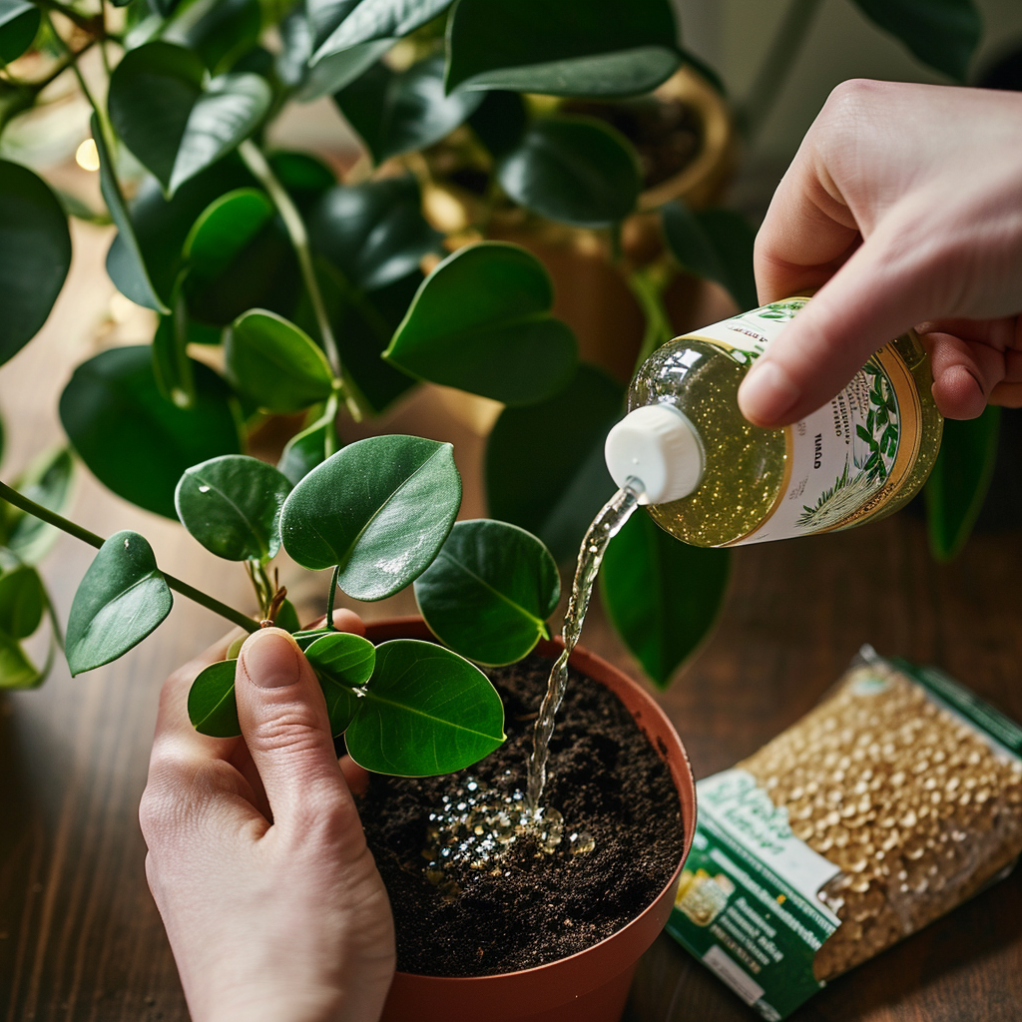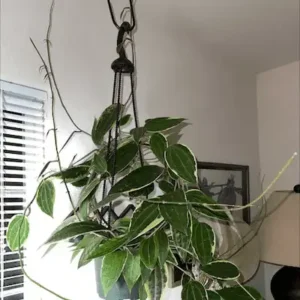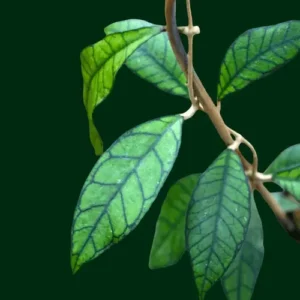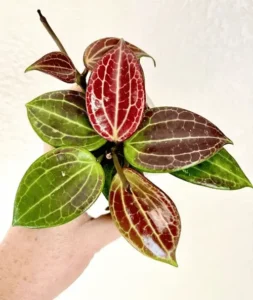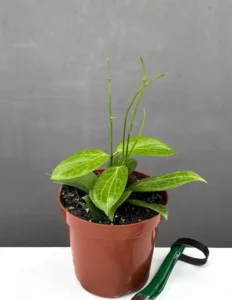Introduction
This article explores the Hoya plant’s fertilizer requirements, helping you ensure your plant thrives and blooms for years to come. However, like all plants, Hoyas require a balanced and well-thought-out fertilization regime to maintain their health, vigor, and flower production. Fertilizer plays a critical role in supplying essential nutrients that are often missing in potting mixes and artificial environments.
Understanding the Basics of Plant Nutrition
Before diving into specific fertilizer recommendations for Hoyas, it is essential to understand the role of nutrients in plant growth. Like all plants, Hoyas require three primary macronutrients:
- Nitrogen (N) – Promotes leaf growth and general plant vigor.
- Phosphorus (P) – Supports root development and flowering.
- Potassium (K) – Aids in overall plant health and disease resistance.
In addition to these macronutrients, Hoyas also benefit from micronutrients such as calcium, magnesium, and iron. While these elements are required in smaller amounts, they are just as crucial to the plant’s overall health.
Fertilizer Type: Organic vs. Synthetic
When fertilizing the hoya plant, you have the option of choosing between organic and synthetic fertilizers.
- Organic Fertilizers
Organic fertilizers, such as compost, worm castings, or fish emulsion, release nutrients slowly as they break down, improving the soil structure over time. Organic fertilizers are typically safer for plants as there is less risk of over-fertilization. They also promote beneficial microbial activity in the soil, which can lead to better long-term plant health.
- Synthetic Fertilizers
Synthetic fertilizers are chemically manufactured to deliver precise concentrations of nutrients. They are fast-acting, providing immediate nourishment to plants. However, they carry the risk of nutrient build-up in the soil if used excessively, which can lead to fertilizer burn or soil toxicity. When using synthetic fertilizers, it is crucial to follow the recommended dosage to avoid harming the plant. One of the most important hoya plant’s fertilizer requirements.
Each type has its benefits and drawbacks, and both can be used successfully with Hoyas, depending on your personal preferences and plant care philosophy.
Fertilizer Ratios and Strength
When it comes to feeding Hoyas, balanced fertilizers with an NPK ratio (Nitrogen: Phosphorus: Potassium) of 2:1:2, 3:1:2, or 2:1:3 tend to work well. These ratios provide a good mix of nutrients to encourage healthy foliage growth without sacrificing flower production.
-Nitrogen (N)
A moderate amount of nitrogen helps keep Hoyas lush and green. Excess nitrogen, however, may promote leaf growth at the expense of flowers.
-Phosphorus (P)
Phosphorus is essential for promoting blooming and root development. A slightly lower amount of phosphorus is adequate for Hoyas as they are not heavy bloomers like some other houseplants.
-Potassium (K)
Potassium aids in overall plant health, particularly by helping the plant regulate water uptake and resist diseases. Hoyas benefit from sufficient potassium levels to support their thick, waxy leaves.
Frequency of Fertilizing Hoyas
Hoyas do not require frequent fertilizing, but regular feeding during the growing season (spring through summer) ensures the plant has the necessary nutrients for healthy growth. Here’s a guideline for fertilizing Hoyas. One of the most important hoya plant’s fertilizer requirements.
-Spring and Summer (Active Growth Phase)
Fertilize every 4 to 6 weeks with a balanced liquid fertilizer diluted to half strength. Hoyas are relatively slow-growing plants, so they don’t need as much fertilizer as fast-growing species. Over-fertilizing can lead to salt build-up in the soil, potentially damaging the plant.
-Fall and Winter (Dormant Phase)
During the cooler months, Hoyas enter a period of dormancy, where growth slows down. Fertilizing is generally unnecessary during this time. If you notice new growth during winter (which can happen in warmer climates), you can opt for a very diluted fertilizer solution once or twice, but it’s not required.
Pro Tip
Hoyas are sensitive to fertilizer salts, so it’s a good idea to flush the soil periodically (every 2 to 3 months) to prevent salt build-up. This can be done by thoroughly watering the plant and allowing excess water to drain out, which helps remove any accumulated salts.
Choosing the Right Fertilizer for Hoya Plants
Hoyas prefer fertilizers that provide a good balance of nutrients without overwhelming the plant. Here are some fertilizer options to consider:
-Balanced Liquid Fertilizer
A 20-20-20 or 10-10-10 liquid fertilizer diluted to half strength is an excellent choice for Hoyas. Apply it once every 4 to 6 weeks during the growing season. One of the most important hoya plant’s fertilizer requirements.
-Orchid Fertilizer
Orchid fertilizers are often formulated for epiphytic plants, which have similar growing conditions to Hoyas. These fertilizers typically have lower nitrogen and higher phosphorus and potassium ratios, promoting flowering without excessive foliage growth.
-Slow-Release Granular Fertilizer
A slow-release granular fertilizer applied at the start of the growing season can provide steady nutrition for your Hoya (plant). Be sure to use a product with a balanced nutrient profile, such as a 14-14-14 formula. One of the most important hoya plant’s fertilizer requirements.
-Organic Fertilizers
Compost tea, worm castings, or fish emulsion can be excellent organic options. These fertilizers release nutrients slowly, promoting long-term soil health. If you choose organic fertilizers, aim for an application every 4 to 6 weeks during the active growing season.
Fertilizing for Flower Production
One of the highlights of growing Hoyas is their fragrant, star-shaped flowers. While Hoyas are not heavy bloomers like some other flowering plants, proper fertilization can enhance their flowering potential. Here are a few tips for encouraging blooms:
-Phosphorus-Rich Fertilizer
Use a fertilizer with a higher phosphorus content (e.g., a 5-10-5 or 10-20-10 ratio) during the spring to promote flower production. Phosphorus supports flower development and can help trigger blooms.
-Avoid Over-Fertilizing
Too much fertilizer, particularly nitrogen, can encourage excessive foliage growth at the expense of flowers. Stick to the recommended dosage and avoid fertilizing during the dormant season.
-Adequate Light
While this is not directly related to fertilization, providing your Hoya with enough bright, indirect light is crucial for blooming. Even with the perfect fertilizer regimen, insufficient light will prevent the plant from flowering.
Common Fertilizer Problems and Solutions
While fertilizing Hoyas is generally straightforward, there are some potential issues to watch out for:
Fertilizer Burn
Over-fertilizing can lead to brown, crispy leaf edges, a condition known as fertilizer burn. If you notice these symptoms, flush the soil with water to remove excess salts and hold off on fertilizing for a few weeks.
Nutrient Deficiencies
If your Hoya’s leaves are yellowing (chlorosis) or the plant appears stunted, it could be a sign of nutrient deficiency. Use a balanced fertilizer to address any potential nutrient gaps.
Salt Build-Up
Fertilizer salts can accumulate in the soil over time, particularly with synthetic fertilizers. To prevent this, flush the soil with water every couple of months and reduce the frequency of fertilization if you notice white crusts forming on the soil surface.
Tips for Maintaining Healthy Hoyas
In addition to proper fertilization, there are a few other key factors that contribute to a healthy Hoya plant:
-Well-Draining Soil
Hoyas prefer a light, well-draining potting mix. A mix designed for orchids or succulents, combined with a bit of perlite or bark, works well for these plants.
-Humidity and Temperature
Hoyas thrive in humid environments with temperatures between 60°F and 85°F (15°C to 29°C). During the winter months, avoid placing them near cold drafts or heating vents.
-Watering Conditions
Water your Hoya when the top 1 to 2 inches of soil are dry. Be sure to let the pot drain thoroughly, as these plants are susceptible to root rot if left in standing water.
| FAQs What is the best fertilizer for Hoya? A 20-20-20 or 10-10-10 liquid fertilizer diluted to half strength is an excellent choice for Hoyas. Apply it once every 4 to 6 weeks during the growing season. What is the NPK ratio for Hoya? When it comes to feeding Hoyas, balanced fertilizers with an NPK ratio (Nitrogen: Phosphorus: Potassium) of 2:1:2, 3:1:2, or 2:1:3 tend to work well. These ratios provide a good mix of nutrients to encourage healthy foliage growth without sacrificing flower production. How can I make my Hoya grow faster? For fast-growing hoya provides bright, indirect sunlight with stable room temperatures of 60°F to 80°F (15°C to 27°C) and additional humidity below 60. Make sure the soil is well-drained and try to make the hoya disturb less. Because Hoyas dislike if the roots are disturbed by hoya keepers. |
Conclusion
Hoyas are resilient, easy-to-care-for plants that will reward you with beautiful foliage and fragrant blooms when given the proper care. A balanced fertilizer regimen, combined with a well-draining soil mix and adequate light, will ensure your Hoya plant thrives. Whether you choose organic or synthetic fertilizers, the key is moderation—over-fertilizing can do more harm than good. Stick to a light, regular feeding schedule during the growing season, and your Hoya will flourish for years to come, gracing your home with its waxy leaves and occasional bursts of star-shaped flowers.
